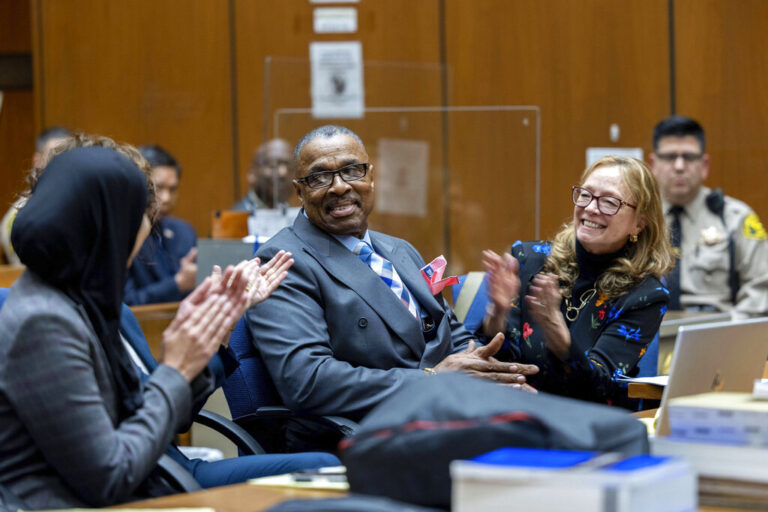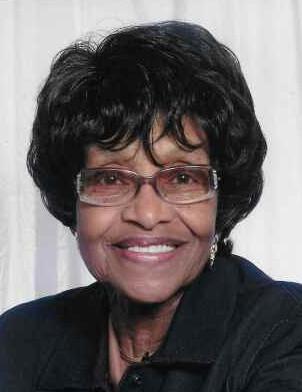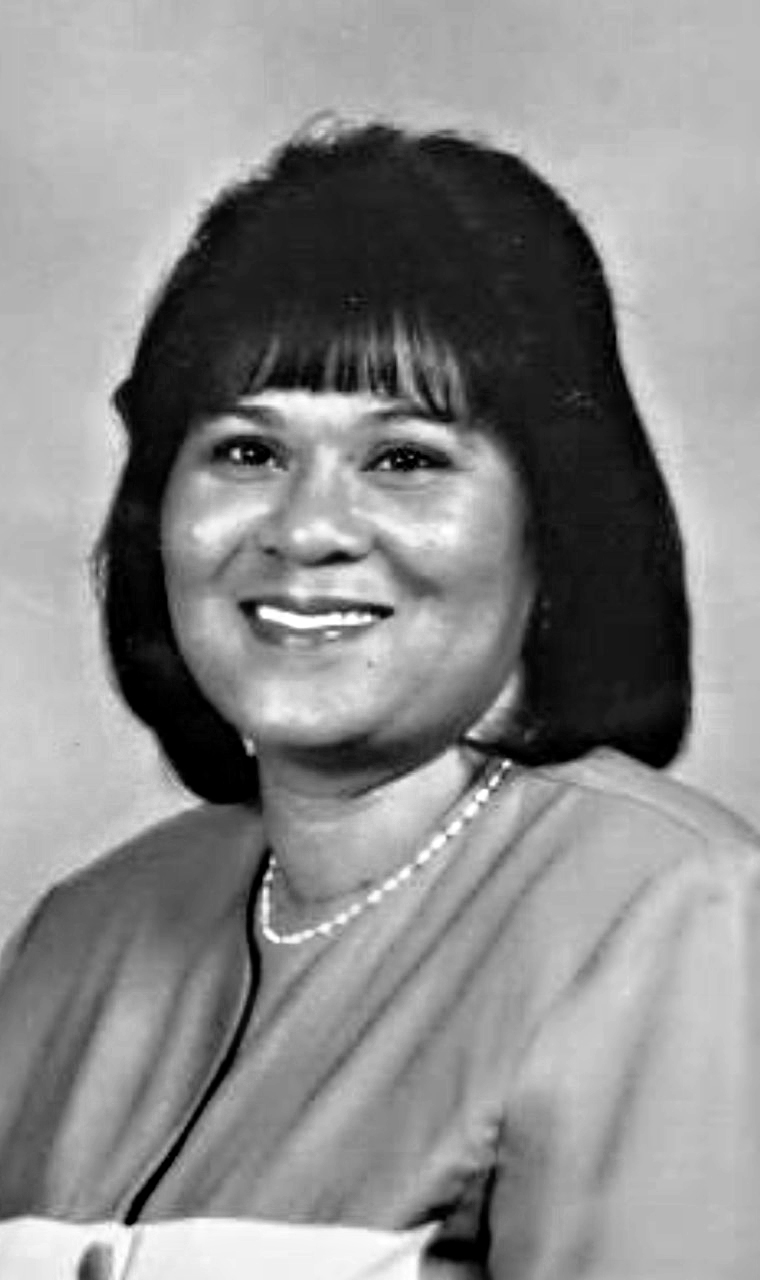By
It’s been 20 years since “The Bernie Mac Show” televised what many of us know all too well: what it’s like to step up to take care of the children of family members.
It’s called “kinship” care — and in the show, Bernie takes custody of his drug-addicted sister’s three children, which puts him firmly in the crosshairs of the child welfare system.
As we see in the show’s first season, using less-than-kid-friendly language while complaining about a high phone bill lands Bernie in hot water. He gets called to his niece Bryana’s school because Bryana repeats Bernie’s words, and then a social worker, Brad Cooley, gets sent to his home.
“You seem hostile to her,” Cooley tells Bernie about the teacher’s perspective. Bernie is understandably confused because he loves the children and would do anything for them.
My whole goal is to reshape the narrative about Black parents and their level of concern for their children.”
BAHIA OVERTON, EXECUTIVE DIRECTOR OF BLACK PARENT INITIATIVE
The white teacher and social worker he’s interacting with don’t understand the nuances of Black parenting (or comedy), and Bernie realizes he needs to watch what he says before the kids get taken away and put in foster care.
Changing a Narrative
More than half of all Black children in the United States will experience a child-welfare investigation by age 18. That’s 53% experiencing the benevolent terror of a system that’s known as being steeped in structural racism.
“My whole goal is to reshape the narrative about Black parents and their level of concern for their children — the level of engagement they’ll have if they get an opportunity,” says Bahia Overton, the executive director of the Portland, Oregon-based Black Parent Initiative.
This doesn’t mean abuse doesn’t happen in Black families — for example, 17% of investigations involve allegations of sexual or physical abuse. But what study after study has found is that caseworkers pathologize and criminalize Black families. The effects of poverty — like a lack of adequate housing or clothing — become a reason to separate Black children from their families. As a result, some kids spend their entire youth in the system until they age out as adults.
“Black foster youth are caught in a nexus of incarceration.”
KENYON LEE WHITMAN AND BRIANNA M. HARVEY, 2020 UCLA BLACK MEN INSTITUTE
Black children are also removed from their homes at higher rates than white children, and as a 2021 report from the federal Child Welfare Information Gateway noted, “racial disparities occur at nearly every major decision-making point along the child welfare continuum.”
That’s why Overton’s dedicated to addressing the inequitable racial factors that disproportionately impact Black families and lead to Black children ending up in the foster care system. She works to teach parents and caregivers “new ways to discipline, new ways to encourage, new ways to advocate.”
Through BPI’s Sacred Roots Doula, Sacred Roots Lactation, and Sawubona programs, parents are given direct help starting before their child is born — assistance that encourages building strong partnerships and families.
“Child development, brain development, environmental factors, and preschool readiness is really what they focus on,” Overton explains, so the involvement of social workers and child protective services isn’t ever required.
The Consequences of Pathologizing Black Children and Families
As Dorothy Roberts, a professor of law, sociology, and civil rights at the University of Pennsylvania, told Time last year, there’s “just an astounding amount of state intervention into the homes of Black children.”
The negative educational impacts of this are staggering. “They’re more likely not to go to college after experiencing foster care, more likely to go to prison,” Roberts said.
If the foundation is something rotten, you can’t keep building on that foundation and trying to be the interior decorator on the walls.”
BAHIA OVERTON
It’s no wonder that Kenyon Lee Whitman and Brianna M. Harvey, the authors of a 2020 study by the UCLA Black Men Institute, wrote that “Black foster youth are caught in a nexus of incarceration.”
They found that Black children in Los Angeles County are suspended at a rate of 17% compared to the overall county rate of 3%. They also “have the highest representation in special education placement at 37%, as well as the largest chronic absenteeism rate at 34%.”
The result? Only 51% of Black foster students graduated from high school on time.
A “Kin-First” Solution
Statistics like these are why Dr. Valerie D. Jackson, founder, and CEO of Monarch Family Services, a “kin first” child-placing agency based in Houston, presents families with recommendations and guidelines to allow children to remain or return to their homes safely.
Jackson was first exposed to children in the welfare system 24 years ago. “I always knew about CPS, but I didn’t know about the world of children living in facilities,” she tells Word in Black. “All these children were intense level of care. A lot of suicidal ideation, homicidal tendencies, and whatnot. These children had been system-involved for four years or more.”
After witnessing firsthand the long-term placement of children in facilities intended to house displaced children, Jackson started the agency in 2013 simply because she wanted more children to be adopted.
“Organically, it became a kinship agency because the first set of families that came to me for adoption purposes were relatives, specifically grandmothers,” Jackson says. “In Houston, I started being known as the grandparent agency.”
Statistics, data, and research support kinship care as the best option for family connection, cultural practices, traditions, and access to biological parents.
I have joy in reshaping the narrative and telling the truth when there’s a bed full of lies about who’s best for our children.”
BAHIA OVERTON
Part of that research shows PTSD symptoms are at least two times higher in children who’ve experienced the child welfare system than in a war veteran who may have regularly seen violence and death.
Through Monarch, families receive assistance in receiving state and federal help, such as temporary financial assistance, psychological services, and, most importantly, family preservation tools meant to allow children to remain or return to the care of their families.
“We try to ensure they’re connected to all those resources, so food stamps, TANF, and Medicaid,” Jackson says.
Despite traumatic events that occur before, during, and after the child removal process, there’s often no emotional or psychological support given to families by the child welfare system. At Monarch, Jackson says licensed, experienced workers address those challenges head-on.
“They need psychological services, which most of them do. We offer them that,” Jackson says. “If they need guardianship papers — a lot of these children are just dropped off to the relatives and don’t hear from parents — we do have a partner agency called the Foster Care Advocacy Center that completes all of our guardianship needs for free.”
Through providing resources, and support, and fostering close-knit relationships, both Jackson and Overton are addressing the inequities in the system and the need to build and keep strong family units.
Although kinship care is nowhere near replacing child removal and foster services as we know them, organizations dedicated to providing families with the necessities for success from the beginning are a committed start toward a more effective system for Black students.
“If the foundation is something rotten, you can’t keep building on that foundation and trying to be the interior decorator on the walls,” Overton says. “I have joy in reshaping the narrative and telling the truth when there’s a bed full of lies about who’s best for our children.”














